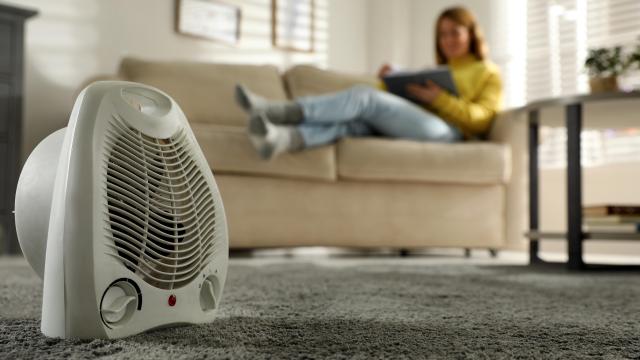Heating and cooling units increase in efficiency every year, but most of us are living with older units and in leaky, older buildings or in new “open floor plans.” At the same time, global warming and environmental change mean we’re dealing with more extreme temperatures every year. These are a recipe for nightmarish energy bills. But however large your home is, you probably spend most of your time in one particular room — that’s the room that’s most important to keep comfortable. You can create a “climate zone” in your home by partitioning it off from the rest of your house so it’s easier to heat or cool.
How to create a climate zone
If, say, your living room can be partitioned by just closing some doors, you’re all set. Keeping them closed, and using draft stoppers under the doors means that your A/C or heater doesn’t have to work as hard, and you can keep the air in your zone.
If doors aren’t an option, you can create a room divider by hanging curtains in the doorways. Use tension rods for a non-permanent, renter-friendly solution. The curtains should be heavy, so velour or velvet are ideal, and should drape to the floor. Robot vacuums can go under, pets can go through as easily as you, and yet, it traps most of the air in the space.
If your windows are leaky, and most are, you can seal them up by using window insulation, which is like shrinking plastic wrap. Kits come with tape and plastic sheets that you tape around your window. Then you use a hairdryer to heat them up, and all the wrinkles disappear, and the plastic tightens around your windows. You cut off the excess. If you’re good at it, they can actually disappear into the window. You can also seal up doors with insulation tape, available at hardware stores.
By focusing on one space, you can lessen the heating or cooling of other areas that you spend little time in.
Use room-specific methods to control the climate
While heating a bathroom can feel luxurious, it’s not necessary. You don’t spend much time in there, and your comfort is largely determined by water temperature.
In your kitchen, you can use a window fan to help exhaust hot air, and when it’s cool at night, to bring air in. In fact, fans in kitchens are wildly underutilised. Keeping a fan on you while cooking in summer blows away the heat coming off the stovetop and keeps a breeze on you. Small clip-on fans that can hang to a shelf or countertop are perfect.
Even though you spend a reasonable amount of time in your bedroom, it doesn’t need to be heated or cooled all day. A blast of air from an A/C, aimed right at you just as you go to sleep might be enough to be comfortable. You can try a window fan as an alternative, allowing the nighttime air to cool you. In winter, bundling up with a heated blanket on a timer can be all you need to comfortably drift off.
Small ways to avoid using your heater and a/c
You really can’t understate the importance of fans during the summer. Having even a small one on the tabletop next to you as you work can make the room feel infinitely cooler, and the same is true at night. During the winter, just putting on a pair of socks will warm you up.
No one is suggesting you go full Little House on the Prairie, but since so many of our older climate units aren’t “smart,” we tend to set them and forget them. For every degree you can adjust your units, you save money. If you can avoid heating or cooling entire areas, that’s even better.

Leave a Reply
You must be logged in to post a comment.